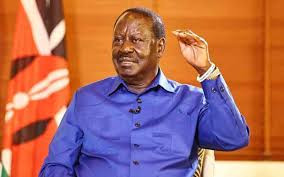By Kibe Mungai
NAIROBI, KENYA: The defeat of Raila Odinga in the Presidential Election held on March 4, 2013 divided the Kenyan nation especially because the 43 per cent of the electorate who voted for him strongly expected he would win easily. As usual, following the announcement of Uhuru’s win, allegations of rigging and electoral malpractices were made by the Cord Coalition as a result of which Raila filed a petition at the Supreme Court.
On March 30 the Supreme Court dismissed Raila’s Petition but deferred reasons for that decision to April 16.
Since the full judgement was delivered a fortnight ago, opinion has remained divided as the election outcome was in the sense that vintage supporters of the Cord Coalition believe the Supreme Court and Independent Electoral and Boundaries Commission were part of a conspiracy to prevent Raila’s inevitable ascendancy to power. In this poisonous atmosphere, therefore, it is easy to understand the strong opinion for or against the Supreme Court judgement.
Raila’s grievances
Before we analyse the judgement’s core elements, it is important to set out the political circumstances around the presidential election and the subsequent election petition.
By any democratic yardstick, the Jubilee Coalition won the General Election so convincingly that it could have been surprising if it had failed to win the presidency.
In all fairness, Raila’s grievances in the wake of Uhuru’s victory were not only contradictory but took three mutually exclusive and conflicting forms.
First in public rallies and political meetings held before and after filing his election petition, Raila claimed that he won the presidential election with about 53 per cent of votes cast against 43 per cent of votes garnered by Uhuru Kenyatta and said that he would prove that fact in Court.
However, in the filed petition, Raila did not claim that he won the presidential election therefore the Supreme Court could not declare he won when he himself did not claim he was the winner.
Secondly, in his election petition, Raila effectively claimed that the presidential election was alright except that Uhuru Kenyatta did not obtain 50 per cent plus one vote required under Article 138(5) of the Constitution. Logically, therefore, Raila’s case was that the IEBC should have declared that no candidate met the constitutional threshold of first round victory in order to pave way for a Run-off in the presidential election. It is notable that in making this contention, Raila was effectively conceding that Uhuru garnered more votes than him!
Thirdly, Raila’s petition also set to prove the reverse of the preceding contention. In this reverse case Raila’s contention was that nothing whatsoever was right with the first presidential election under Kenya’s new Constitution. Thus the register of voters was invalid and fraudulent, BVR machines failed to work and so the whole results were compromised and that the IEBC and its officials acted so illegally and fraudulently that the presidential election held on March 4 should be set aside. Thus it was not just that the declaration of the IEBC that Uhuru Kenyatta was elected that was invalid but that the entire presidential election was invalid and for all practical purposes no presidential election was held on March 4.
In my view, the only rational conclusion from these conflicting premises of Raila’s grievances and election petition is that there was no effective redress that the Supreme Court could give to vindicate his loss. The reason is obvious: if it held that the results were invalid, the basis for doing that was bound to raise the question of whether the fresh election could be supervised by the IEBC. Accordingly, the current political fallout over the Supreme Court judgement is not surprising because the same would be the case even if it had somehow allowed Raila’s petition.
There are five core issues in our brief review of this landmark decision which has been described by some respectable analysts as underwhelming and rather too average intellectually for any Supreme Court decision. The first issue relates to validity of the voters register under which all the six elections from county representative to the president were held. Raila’s case was that there was no credible register of voters especially because besides the biometric voter register IEBC also has a special register which he believes was made to assist Uhuru to win the presidency. On this issue, the Supreme Court held correctly in my view that for purposes of the March 2013 General Election the voters register comprised both the Biometric Voter Register and the special register for all persons who could not be registered using biometrics such as disabled persons and hard labourers.
Voter identification
Stay informed. Subscribe to our newsletter
The second issue concerns electronic voter identification. As we all know, throughout the country the biometric voter identification (BVI) devices failed within one hour and so IEBC had to resort to the Green-Book register where the names and details of all voters in a constituency are manually captured. By and large the Green-Book enabled over 12 million Kenyans to vote but Raila’s case was that Kenyans were promised to expect that voters would be electronically identified in order to prevent fraud. The Supreme Court held that the Green Book was sufficient in identification of voters and so the failure of the BVI devices did not adversely affect the outcome of the elections.
The third issue concerns the collapse of the electronic results transmission system. Raila’s main contention was that in the absence of credible transmission of provisional results electronically it was not possible to verify the final results. Thus he argued that without provisional results, it became possible for Forms 35s from the polling stations to be fabricated to deny him victory. On this score again the Supreme Court held that Raila did not prove that the vote tallying was flawed or deliberately distorted to deny him victory.
The fourth issue concerned the allegation that with the failure of BVR and BVI devices, collapse of the electronic voter transmission system and in the face of a defective voters register the election could not be said to have complied with the principles of free and fair elections under Article 81 of the Constitution and other laws. However, the Supreme Court, looking at the totality of the circumstances in which the General Election was conducted by IEBC, held that IEBC conducted the elections in a free, fair, transparent and credible manner and in compliance with the law.
The final issue was whether Uhuru and Ruto were validly. In upholding the validity of the presidential election the court judges held that there were no substantial irregularities to affect the credibility of the electoral process and in any case the few irregularities were not premeditated or introduced by the IEBC for purposes of prejudicing any particular candidate. In the result, Uhuru was validly elected as the Fourth President of Kenya.
 The Standard Group Plc is a
multi-media organization with investments in media platforms spanning newspaper
print operations, television, radio broadcasting, digital and online services. The
Standard Group is recognized as a leading multi-media house in Kenya with a key
influence in matters of national and international interest.
The Standard Group Plc is a
multi-media organization with investments in media platforms spanning newspaper
print operations, television, radio broadcasting, digital and online services. The
Standard Group is recognized as a leading multi-media house in Kenya with a key
influence in matters of national and international interest.
 The Standard Group Plc is a
multi-media organization with investments in media platforms spanning newspaper
print operations, television, radio broadcasting, digital and online services. The
Standard Group is recognized as a leading multi-media house in Kenya with a key
influence in matters of national and international interest.
The Standard Group Plc is a
multi-media organization with investments in media platforms spanning newspaper
print operations, television, radio broadcasting, digital and online services. The
Standard Group is recognized as a leading multi-media house in Kenya with a key
influence in matters of national and international interest.








